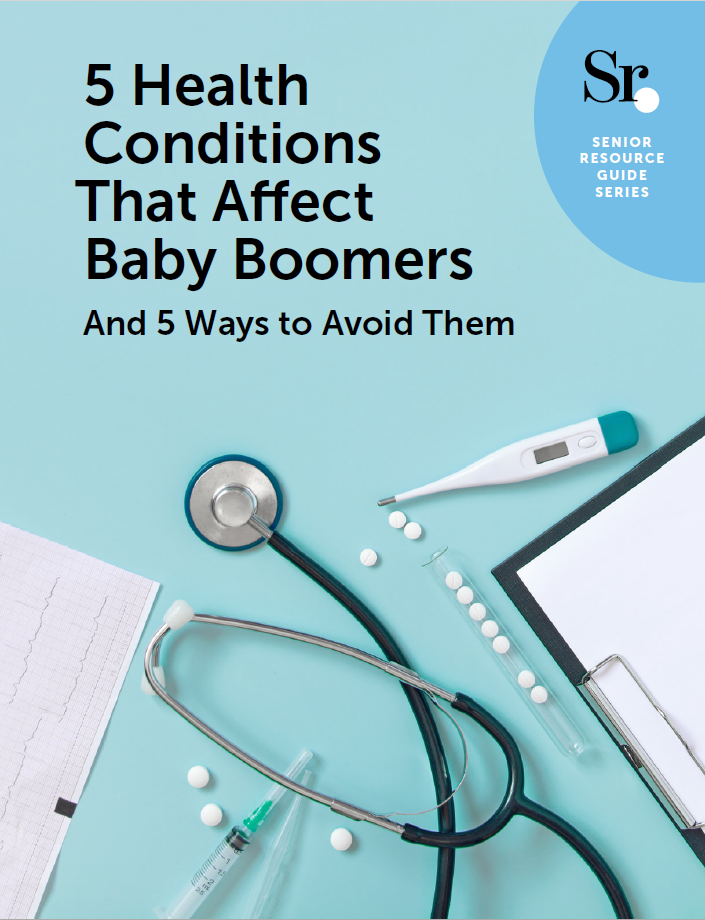Understanding Autism in Older Adults

Autism spectrum disorder (ASD) is a lifelong neurodevelopmental condition that affects communication and behavior. Symptoms generally appear by age 2 or 3. Because autism is a spectrum, symptoms and challenges vary from person to person. Autism research has grown in the last 50 years. Many older adults may have gone through life feeling different from others but not knowing why. They may have even been diagnosed with generalized anxiety disorder (GAD), depression, ADHD, or other common comorbidities that accompany ASD while the root of their issues is missed.
Thanks to a growing body of research, more and more adults over the age of 50 are being formally diagnosed. But how can you know if you have autism spectrum disorder? What are the benefits of receiving a late-in-life diagnosis? Keep reading to find out the answers to those questions, and more!
What Is Autism?

Autism spectrum disorder, or ASD, refers to a wide range of conditions whose hallmarks are social challenges, repetitive and restrictive behaviors, and difficulty with speech and nonverbal communication. People with ASD often behave, speak, think, and communicate differently than their neurotypical (non-autistic) peers. However, it’s important to note that some autistic individual’s differences are internalized. Others might not know an individual is struggling with social and communication challenges, as they may have worked hard to mitigate their differences through camouflage or “masking.”
Masking, sometimes referred to as “social camouflaging” or “passing”, refers to the compensatory strategy used by autistic individuals to hide their differences and fit in with their non-autistic peers.
The skills and abilities an autistic person possesses may vary. For example, some individuals with autism may have excellent conversational skills while others are nonverbal. As autistic individuals age into adulthood, they may begin to struggle with maintaining or developing friendships or relationships, communicating with their peers, or understanding the expectations that come with school or the workplace. Undiagnosed individuals may face these challenges without having a clear reason why, leading to a lifelong feeling of brokenness.
Understanding the Three Levels of Autism

The Diagnostic and Statistical Manual of Mental Disorders, 5th Edition (DSM-5) maintains that there are three levels to autism spectrum disorder, separating individuals based on functioning labels (low vs. high functioning). However, it’s important to note that these labels are not fixed. Individuals may experience fluctuations in levels or functioning on a day-to-day basis. As writer and autism advocate Lisa Jo Rudy notes, these levels serve as a guideline for the medical community and may help society at large understand that autism can present in different ways among individuals.
Individuals who receive a formal autism diagnosis are labeled either ASD Level 1, 2, or 3, depending on support needs. These levels can help medical professionals and caretakers better understand an individual and their unique challenges and needs and formulate a more effective treatment plan.
ASD Level 1: Requiring Support
Level 1 is broadly considered the “mildest” or “highest functioning” form of autism. This level includes those who may have previously been diagnosed with Asperger’s syndrome, now included among autism spectrum disorders. Individuals who have Level 1 ASD may struggle socially and have difficulty with planning and executive function. Other common symptoms include:
- Social Communication
- Deficits in social communication, such as struggling with the back-and-forth of a conversation or understanding humor.
- Missing social cues.
- Conversational timing, i.e. when it’s their turn to speak in a conversation.
- Challenges with understanding nonverbal communication, such as facial expressions or body language.
- Trouble initiating conversaitons.
- May have less interest in social interactions.
- Restrictive and Repetitive Behaviors
- Behavioral rigidity and inflexibility.
- Insistence on doing things a certain way over and over.
- Getting upset over slight changes in routine.
- Sensory sensitivity to light, sound, clothing, noise, or temperature.
ASD Level 2: Requiring Substantial Support
Individuals with ASD Level 2 may have more noticeable or obvious struggles with social communication and repetitive behaviors. They may find it difficult to mask and struggle to relate to and find acceptance among neurotypical people. Likewise, they may experience challenges with shifting from one task to another. Some other symptoms that individuals with ASD Level 2 may display include:
- Social Communication
- Using fewer words or having noticeably different speech patterns.
- Displaying atypical social behaviors, such as walking away from a conversation before it’s finished or not responding at all.
- Missing nonverbal communication cues like facial expressions.
- Restrictive and Repetitive Behaviors
- A high interest in specific topics.
- Noticeable stress when dealing with change.
Level 3: Requires Very Substantial Support
People with Level 3 ASD have the most support needs. Sadly, individuals who’ve received this diagnosis are also at a higher risk for neglect, abuse, and discrimination. People with Level 3 ASD are often unable to mask altogether and may find it very difficult to communicate. Those with this diagnosis often exhibit the following symptoms:
- Social Communication
- May be nonverbal or engage in echolalia (involuntarily repeating words or phrases).
- Prefer solitary activities.
- Have a limited interest in forming friendships.
- Display minimal response to social communication or be unable to initiate social interactions.
- Restrictive and Repetitive Behaviors
- May have extreme difficulty dealing with change and flexibility.
- Extreme distress when switching tasks.
- May engage in stimming behaviors that “markedly interfere with functioning in all spheres.”
Stimming, short for self-stimulating behaviors, refers to the repetitive body movements or noises often associated with autism. Some examples of stimming include jiggling your foot, biting your nails, or twirling your hair.
Criteria for an Autism Diagnosis

To receive a formal autism diagnosis, an individual must meet the criteria as laid out by the DSM-5. According to Embrace Autism, the following three criteria must be present to warrant a formal autism diagnosis:
- Social-emotional reciprocity: This may include abnormal social approach and failure of normal back-and-forth conversation to reduced sharing of interests, emotions, or affect, to failure to initiate or respond to social interactions.
- Nonverbal communicative behaviors: This may include poorly integrated verbal and nonverbal communication, abnormalities in eye contact and body language, or deficits in understanding and use of gestures.
- Developing, maintaining, and understanding relationships: This may include difficulty adjusting behavior to suit various social contexts or difficulties in sharing imaginative play or in making friends or complete absence of interest in peers.
Additionally, two of these four criteria must be present for an individual to receive a formal autism diagnosis:
- Repetition: Individuals might display repetitive stereotyped movements, use of objects, or speech, such as echolalia.
- Rigid behaviors and thinking: Individuals will struggle with fixed, black-or-white thinking. Additionally, they might display rigid, inflexible adherence to certain routines or rituals and display extreme distress at small changes. Abstract thinking may also be a struggle.
- Intense interests or attachment to objects: Individuals may become obsessed with a particular topic or hobby. They may also obsessively collect objects, such as dolls or movie memorabilia, or be prone to hoarding.
- Sensory processing: Individuals might struggle with sensitivity to sensory, such as bright lights or loud noises. Conversely, they might struggle with under-reactivity. For example, someone might stub their toe and not realize they’re hurt because they won’t feel pain. They might also fixate on one element of their environment and be unable to tune it out.
Symptoms must also be present since childhood and “cause clinically significant impairment in social, occupational, or other important areas of current functioning” (according to Embrace Autism).
What Are the Benefits of Receiving a Late-in-Life Diagnosis?

Individuals in their 50s, 60s, or even 70s may not see the point of receiving a formal autism diagnosis—even if it would explain the challenges and struggles they’ve faced throughout their lives. Dr. Lucy Livingston, senior research fellow at the University of Bath and Lecturer in Psychology at King’s College London, stated, “For some people, finding out they are autistic sooner rather than later was linked to a better quality of life. For others, finding out later was better. Overall, there was no overall link between the age they found out and their quality of life.”
It’s important to note that receiving an autism diagnosis may help you receive better support and understanding from those around you. Many individuals also find a formal diagnosis to be a relief—proof that they’re not fundamentally broken or weird but that they’re just wired differently than their neurotypical peers. Additionally, individuals with ASD are two times more likely to receive a dementia diagnosis. Receiving a formal diagnosis may also help older adults better understand and cope with the comorbidities that often come along with autism spectrum disorder.
More Autism Resources

If you believe you or a loved one have ASD, consider making an appointment with a doctor or autism specialist for an evaluation. They can use a variety of tests and diagnostic tools that may help you receive the support and understanding you need to live your healthiest, happiest life.
For additional autism resources, visit these links:
Popular Articles About Health Conditions, and Health & Wellness
Originally published March 26, 2024








